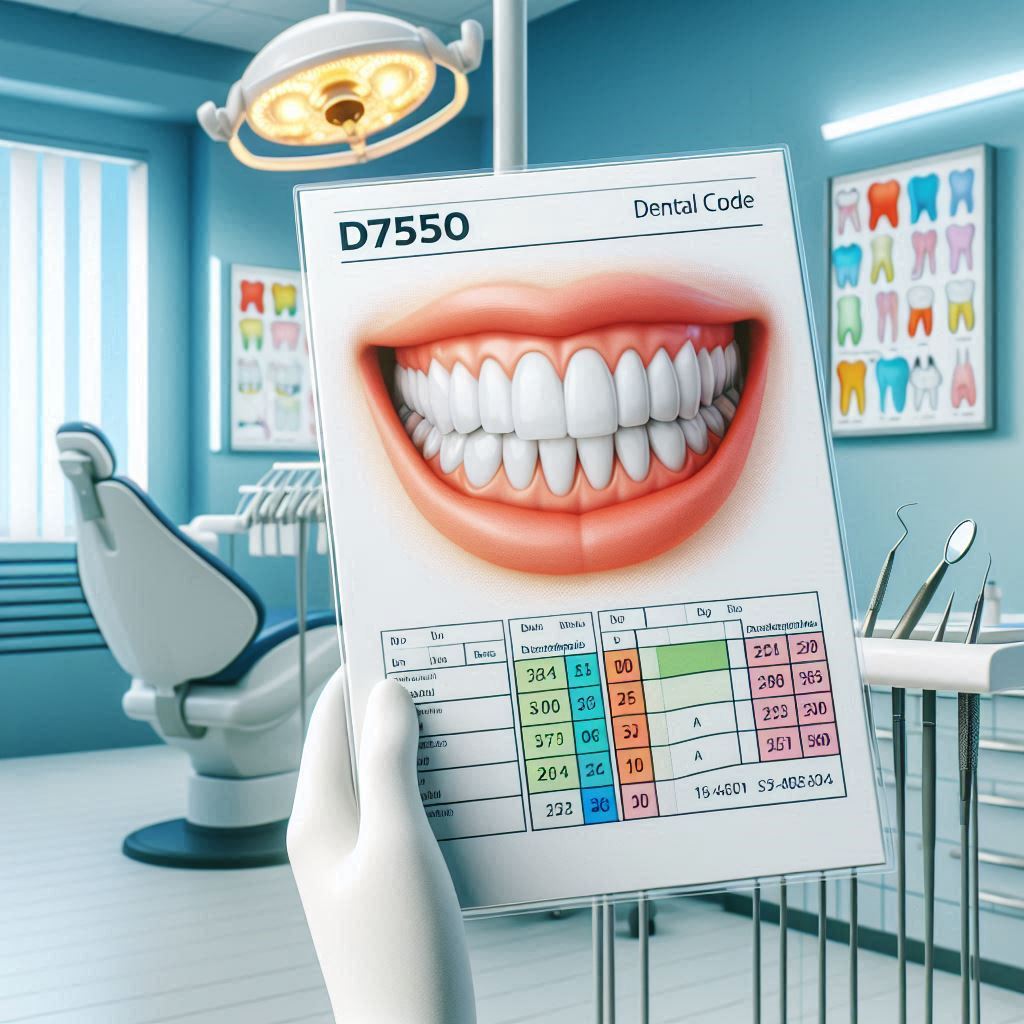D7550 Dental Code
Dental procedures often involve complex surgical interventions, and understanding the associated codes is crucial for both practitioners and patients. One such code, D7550 (Partial Ostectomy) is a specialized surgical procedure that involves the removal of a portion of the bone to address various dental conditions. Whether it’s for impacted teeth, pathological lesions, or prosthetic preparation, this procedure plays a vital role in oral surgery.
This comprehensive guide explores everything you need to know about D7550, including its clinical applications, procedural steps, benefits, risks, and recovery. By the end, you’ll have a clear understanding of when and why this procedure is performed, ensuring informed decisions for both dental professionals and patients.

2. What is the D7550 Dental Code?
The D7550 dental code, as defined by the American Dental Association (ADA), refers to “Partial Ostectomy – removal of a portion of the bone.” This procedure is typically performed when a segment of the jawbone needs to be excised due to:
- Impacted teeth (e.g., wisdom teeth)
- Pathological conditions (cysts, tumors, or infections)
- Bone recontouring for prosthetic or orthodontic reasons
Unlike a full ostectomy (complete bone removal), a partial ostectomy targets only the affected area, preserving surrounding healthy bone structure.
3. Understanding Partial Ostectomy (D7550)
Definition and Purpose
A partial ostectomy involves the surgical removal of a specific section of bone to:
- Facilitate tooth extraction (especially impacted teeth)
- Eliminate diseased bone tissue (due to cysts, osteomyelitis, or tumors)
- Reshape bone for better prosthetic (denture or implant) adaptation
When is a Partial Ostectomy Needed?
Common scenarios include:
- Impacted Wisdom Teeth: When a tooth is trapped beneath the gumline or bone, partial bone removal may be necessary for extraction.
- Cyst or Tumor Removal: If a lesion affects the jawbone, a partial ostectomy ensures complete excision.
- Bone Grafting Preparation: Before placing implants, bone reshaping may be required for optimal fit.
4. The Partial Ostectomy Procedure: Step-by-Step
Pre-Surgical Evaluation
- Diagnostic Imaging: X-rays, CT scans, or 3D imaging assess bone structure.
- Medical History Review: Ensures no contraindications (e.g., bleeding disorders).
Surgical Techniques
- Anesthesia Administration (Local or General)
- Incision & Flap Elevation (Gum tissue is lifted to access bone)
- Bone Removal (Using burs, chisels, or lasers)
- Debridement & Cleaning (Removal of debris and infection)
- Closure & Suturing
Post-Operative Care
- Pain Management (NSAIDs or prescribed analgesics)
- Antibiotics (If infection risk is high)
- Dietary Restrictions (Soft foods, no smoking/alcohol)
5. Conditions Requiring Partial Ostectomy (D7550)
| Condition | Reason for Partial Ostectomy |
|---|---|
| Impacted Teeth | Remove obstructing bone for extraction |
| Odontogenic Cysts/Tumors | Excise affected bone to prevent recurrence |
| Osteomyelitis (Bone Infection) | Remove necrotic bone to stop spread |
| Bone Recontouring for Implants | Ensure proper prosthetic alignment |
6. Benefits of Partial Ostectomy
✔ Preserves Healthy Bone (Only diseased/obstructive bone is removed)
✔ Improves Healing (Reduces risk of complications)
✔ Enhances Prosthetic Fit (Better denture/implant stability)
7. Risks and Complications
- Infection (Requires antibiotics)
- Nerve Damage (Rare, but may cause numbness)
- Excessive Bleeding (Controlled with proper technique)
8. Recovery and Aftercare
- First 24 Hours: Ice packs to reduce swelling.
- 1-2 Weeks: Soft diet, avoid strenuous activity.
- Follow-Up Visits: Ensure proper healing.
9. D7550 vs. Other Dental Surgical Codes
- D7210 (Tooth Extraction) – Does not involve bone removal.
- D7953 (Bone Grafting) – Adds bone rather than removing it.
10. Cost and Insurance Coverage
- Average Cost: 300−300−1,500 (Varies by case complexity).
- Insurance: Often covered if medically necessary.
11. FAQs
Q1: Is partial ostectomy painful?
A: No, anesthesia ensures a painless procedure; discomfort is manageable post-op.
Q2: How long does recovery take?
A: Initial healing takes 1-2 weeks; full bone remodeling may take months.
Q3: Can I eat normally after surgery?
A: Stick to soft foods for the first week to avoid disturbing the surgical site.
12. Conclusion
The D7550 (Partial Ostectomy) is a vital dental surgical procedure for removing obstructive or diseased bone segments. Whether for impacted teeth, cysts, or prosthetic preparation, it ensures optimal oral health with minimal complications. Proper diagnosis, surgical technique, and aftercare are key to successful outcomes.
13. Additional Resources
- American Dental Association (ADA) Codes
- Journal of Oral and Maxillofacial Surgery
- AAOMS Surgical Procedures Guide


